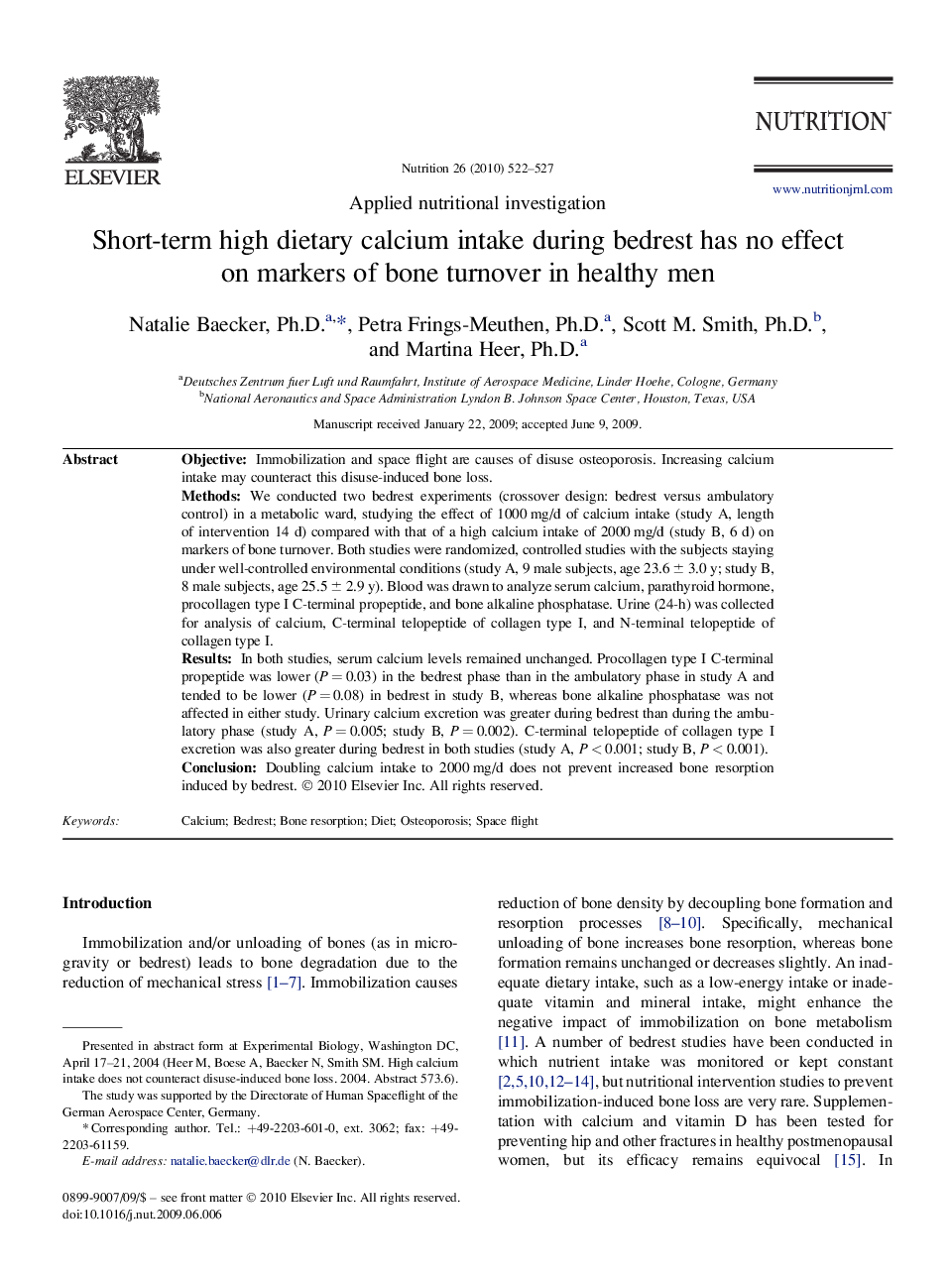| Article ID | Journal | Published Year | Pages | File Type |
|---|---|---|---|---|
| 3276994 | Nutrition | 2010 | 6 Pages |
ObjectiveImmobilization and space flight are causes of disuse osteoporosis. Increasing calcium intake may counteract this disuse-induced bone loss.MethodsWe conducted two bedrest experiments (crossover design: bedrest versus ambulatory control) in a metabolic ward, studying the effect of 1000 mg/d of calcium intake (study A, length of intervention 14 d) compared with that of a high calcium intake of 2000 mg/d (study B, 6 d) on markers of bone turnover. Both studies were randomized, controlled studies with the subjects staying under well-controlled environmental conditions (study A, 9 male subjects, age 23.6 ± 3.0 y; study B, 8 male subjects, age 25.5 ± 2.9 y). Blood was drawn to analyze serum calcium, parathyroid hormone, procollagen type I C-terminal propeptide, and bone alkaline phosphatase. Urine (24-h) was collected for analysis of calcium, C-terminal telopeptide of collagen type I, and N-terminal telopeptide of collagen type I.ResultsIn both studies, serum calcium levels remained unchanged. Procollagen type I C-terminal propeptide was lower (P = 0.03) in the bedrest phase than in the ambulatory phase in study A and tended to be lower (P = 0.08) in bedrest in study B, whereas bone alkaline phosphatase was not affected in either study. Urinary calcium excretion was greater during bedrest than during the ambulatory phase (study A, P = 0.005; study B, P = 0.002). C-terminal telopeptide of collagen type I excretion was also greater during bedrest in both studies (study A, P < 0.001; study B, P < 0.001).ConclusionDoubling calcium intake to 2000 mg/d does not prevent increased bone resorption induced by bedrest.
